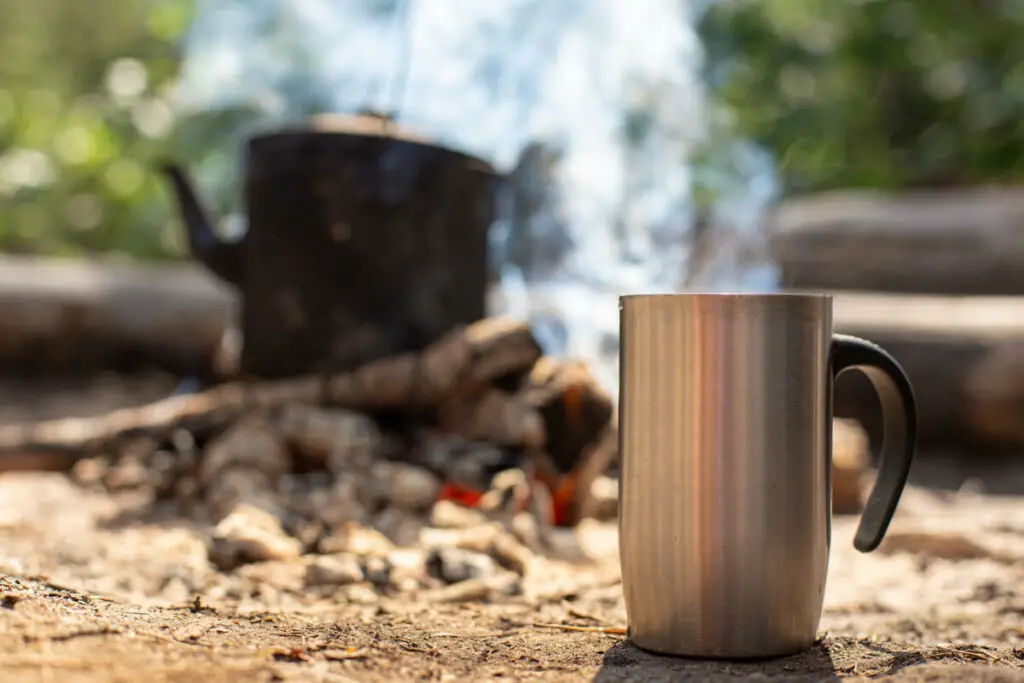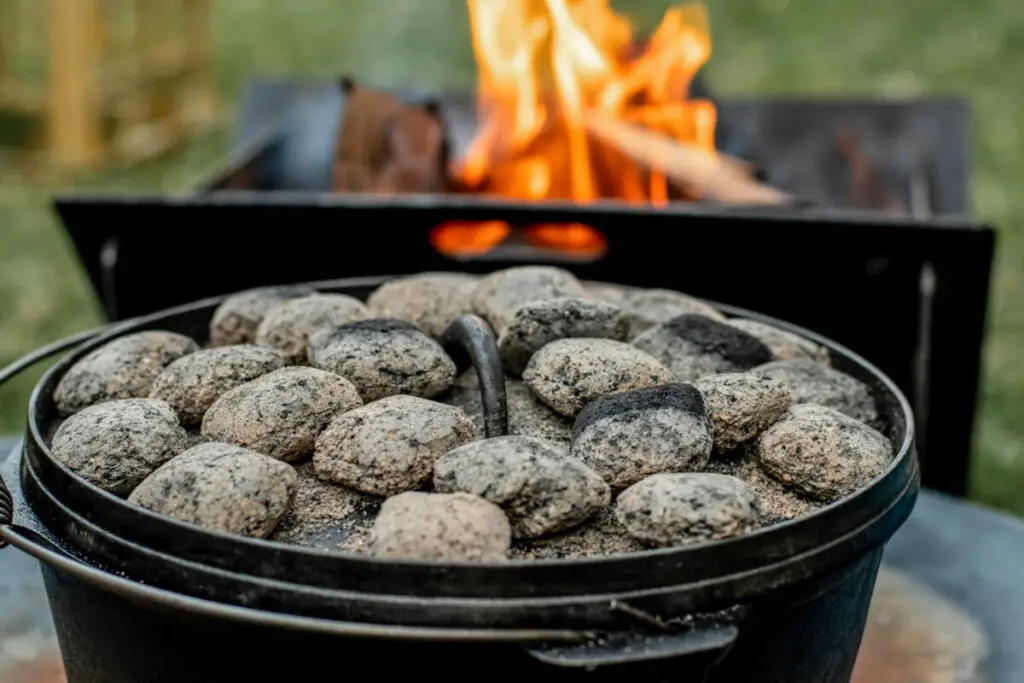
Campfires are an integral part of camping. Long after your trip is finished the memories of the flames, and the smell, will linger in your mind. You might be unsure as you prepare your campfire will it melt your tools or pots?
It is unlikely that a small campfire will burn hot enough to melt aluminum. It is possible since aluminum melts at 660 degrees Celcius and wood fires can burn at temperatures up to 950 degrees Celsius. However, if used properly, aluminum foil and dutch ovens can be used safely inside a campfire.
While you might have some hesitations about using aluminum around your campfire, don’t worry. As long as you follow some simple guidelines listed below, you can use aluminum on your next camping trip successfully.
How to Melt Aluminum in a Campfire
While it is unlikely that you will do so, it is possible to melt aluminum in a campfire. This will depend on a variety of different things. The first thing is how hot your campfire is burning. Most wood campfires will catch fire at a relatively low temperature (around 300 degrees Celsius).
However, they can burn much hotter than this. Wood fires have been used to smelt metals for thousands of years meaning that any campfire you make could burn hot enough to melt metals like aluminum. While the temperature the fire is burning at is important, it isn’t the only factor.
More important than how hot a flame is, is how much flame there is. A simple way to think about this is a candle. The candle is burning at a heat that should be enough to burn aluminum. However, no matter how long you hold the candle under a piece of aluminum, for example, an empty soda can, it simply won’t melt.
This is because while the candle is heating a portion of the can up, the heat is being spread to the rest of the can keeping the temperature of the can low. In order to heat the can to the melting temperature, it would need to be put in a flame much larger than the can so all of it was being heated at once.
In summary, it is possible to melt any type of aluminum in a campfire. However, it is unlikely because you would have to have a large, hot campfire. Into this fire, you would need to put a relatively small amount of aluminum. The heat of the fire would need to remain constant, this won’t be a quick process. The aluminum wouldn’t melt immediately, no matter how hot or large your campfire is.
Using Aluminum Foil
One of the reasons you might be worried about aluminum melting is you might be planning on using aluminum foil during your next camping trip. This is a common tool to use with a pot or by itself to cook meals over a campfire. If it were to melt, the foil could get stuck to the food inside and ruin your meal. Also, you might wonder if it is going to melt why should you even use it?
Luckily for you, aluminum foil is a completely viable way to cook meals with a campfire. It could be used as a liner for a pot or a dutch oven (more on that later). It could also be used by itself to cook a meal. This process can be called a lot of different things but is commonly known as a tin foil dinner.
If you look online, you will find a variety of recipes that you can make yourself using fire and a little bit of foil. Here is a short video I found describing how to make “foil packet meals”, his way of describing a tin foil dinner.
There are a couple of things that you might have noticed about his process in this video. The first thing is that you don’t need a lot of aluminum foil to pull these meals off. For each meal, he was using just over a foot of foil and didn’t need to wrap the meal in multiple layers of foil. A single layer of foil is safe to use in a campfire and works great.
The second thing is that he didn’t put these packets into a burning fire. Instead, he let the fire burn down to its coals before putting the packets in. This serves two purposes. First, by using coals instead of flames to cook the meals we can prevent the foil from becoming scorched or beginning to melt.
Secondly, coals provide a more reliable source of heat to cook the meal. You can use natural coal that will form out of firewood or you can put some charcoal into the fire before letting it burn down. When using coals to cook, you should have some on the top and bottom of the packet. This ensures your meal cooks evenly. Make sure the foil is folded tightly so ashes don’t get inside when you place coals on top.
Using Aluminum Dutch Ovens

Another type of aluminum you might be using over a campfire is an aluminum dutch oven. While dutch ovens are traditionally made with cast iron metal, aluminum ones have become popular. This website explains some of the benefits of aluminum with it being much lighter, sometimes one-third the weight of cast iron, and being easier to season and clean since it won’t rust.
While it does have these benefits, it does have the risk of melting over a campfire at high temperatures. The biggest risk isn’t it completely melting but becoming “sticky”. A dutch oven becomes sticky when the metal overheats and begins to soften in places, sticking to its contents. To prevent this, here are a few tips:
- Don’t put your dutch oven over a flame. Instead, use coals above and below it.
- Don’t heat your dutch oven when it is empty. Always have food or water inside while heating it.
- Rotate your dutch oven while cooking to prevent hot spots from developing.
By following these simple guidelines, you will be able to use your aluminum dutch oven for years safely.

